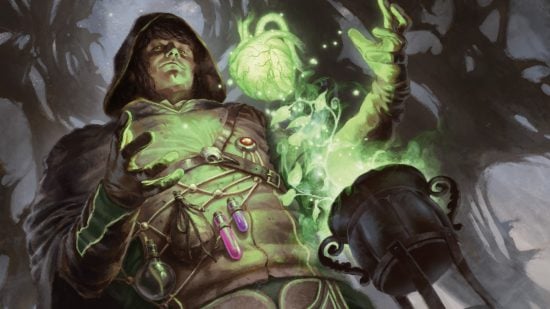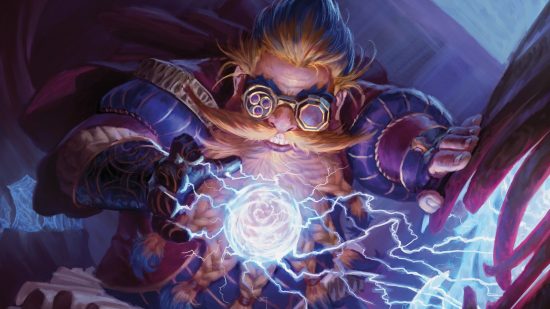In the world of DnD, Attunement 5e is a process where players focus their minds to create a bond with a magic item. It’s a bit like pairing your phone to a new Bluetooth device. Most of the best magic items won’t work properly until they are attuned: your flaming sword will not light up, your enchanted shield will be just like any other flat lump of metal. So, if you want to use cool stuff, it’s essential you understand how attunement works.
To cut to the chase, attunement 5e is a mechanic written into Dungeons and Dragons to help balance the game. As you’re only able to attune to three items at once, DMs can be pretty liberal when handing out 5e magic items, without worrying too much about players finding busted interactions and taking the challenge out of the DnD campaign.
While some people have house rules to increase the number of ‘attunement slots’ (not an official term) you get, this is one of the few values baked into the rules that can’t be increased with the DnD level up.
In this guide we’ll cover everything there is to know about attunement, so that – whatever your DnD class – you can wield magic just as mightily as your party’s 5e Wizard (kinda). We’ll also cover the rules from the DMs perspective, and discuss different approaches to the attunement 5e rules.
How to attune to a magic item in DnD
To attune to a magic item, all you need to do is stare at it. Well, sort of: you need to spend an uninterrupted short rest focused on and in contact with the item. After that, you’ll automatically have an understanding of how to use that item, and it will be attuned to your character.
You can only attune to three items at once. If you already have three, you will need to end attunement with one before you can attune to a fourth. You also can’t attune to two copies of the same item, so no stacking identical bonuses!
A few magic items have prerequisites you must meet before you can attune to them. For instance, many staffs require you to be some sort of spellcaster class, be it a DnD Bard or DnD Warlock.
How to end attunement with an item
You can end attunement with an item, once again by spending a short rest concentrating on it. This will work unless the item is cursed, in which case you’ll have to break the curse before you can be rid of it.
There are also a few things that can automatically end attunement. Death is one of them – so bear that in mind if you’re being revived. Attunement will also end if another creature or person becomes attuned to an item, or if you spend more than 24 hours more than 100 feet away from it.
Which magic items don’t need attunement?
Not all magic items need attunement, but generally the more powerful, game-changing artifacts do. We don’t have time to go over a complete list, but here are a few useful or strong magic items that don’t need attunement:
- Bag of holding
- Portable hole
- Broom of flying
- Wand of magic missiles
- Generic +1 magic weapons and armor
- Circlet of blasting
- Alchemist’s jug
- Ring of three wishes
Is attunement 5e really necessary?
Some DnD players chafe against the restrictions imposed by the attunement 5e rules, but they are in place for a good reason. They work to prevent magic items being used in a problematic way, through stacking bonuses and finding nasty little combos that break the game. Attunement also encourages players to be more even in how they spread out magical loot, and dissuades excessive powergaming.
Attunement 5e can be thought of as a safety net that stops a party’s power getting too out of hand. Since DMs already have quite a hard time coming up with adventures that pose a realistic challenge to a high level party, it’s quite a useful feature.
One of the philosophies of 5e is that a character’s main strength should come from their class abilities, rather than the oodles of magical spoons hanging off them. The attunement rules also allow for more interesting, powerful magic items that DMs might otherwise be scared to introduce, since there are these hard limits in place.
Even if your party won’t be tempted to crack the game’s rules wide open with unlimited magic items, think twice before doing away with attunement. There are other disadvantages to being covered head to toe in magic items. For instance, it can bog gameplay down if players have equipment sheets that are the size of a long essay.
That said, attunement is definitely not as mandatory as some 5e fans believe. DMs are entirely in control of what magic items the players can get hold of, so if they’re careful, they can only hand out ‘safe’ items, or find some suitable story reason to take away tools that end up getting out of hand.
It’s up to you how you handle attunement at your table. We’d suggest if a player wants an extra attunement slot you consider it, but find some other trade off to keep things vaguely balanced.
What items should require attunement 5e?
If there’s one thing DMs love most, it’s homebrewing their own magical relics. But once you’ve come up with a great name and effect for a mystical wotsit, then comes the question of whether the item should require attunement.
The best advice we can give is to think hard about how disruptive the item could be. If it boosts an effect that other items could buff, like a DnD stat boost, slap attunement on there, to avoid the problem of item buff stacking.
Items that ought to have attunement:
- Provides a new form of movement like flight or teleportation.
- Particularly powerful items.
- Gives stat buffs.
- Would have bad consequences if players had multiple.
- Provide spell slots or spell slot-like effects.
Items that may not need attunement:
- Items with limited charges.
- Consumables.
- Utility items.
- Cosmetic/non gameplay items.
- A better version of mundane equipment.
How to increase your attunement slots
Short of your DM allowing you to bend the rules, the only way to increase your attunement slots is to play the Artificer 5e class. This class is all about magical gadgets, and part of that is a greater portion of your power comes from your magic items.
As a result, the artificer is the only class that is able to attune to more magic items as they process. At 10th level, Magic Item Adept means you can attune to four. At 14th level, Magic Item Savant means you can attune to five at once. And at 18th level, Magic Item Master means you can attune to six items, double the number a regular player can manage.
For more magical content, check out our ranking of the varied DnD Wizard subclasses. And don’t miss our handy guide to all the DnD races – even the obscure stuff like the Tortle 5e and Aarakocra 5e.






